Even among Istanbul's grand monuments, the Blue Mosque stands apart. With its six minarets, expansive courtyard, and vast, luminous interior, this is not just one of the most visited mosques in the world—it is one of the most astonishing. Officially named the Sultan Ahmed Mosque, it's a marvel of classical Ottoman design, drawing visitors from every corner of the globe.
Yet even with its fame, the experience inside remains transportive. Endless rows of Iznik tiles in floral motifs, chandeliers that hang low from a ceiling patterned like the inside of a kaleidoscope, and columns so massive they seem grown rather than built—there's a slow, otherworldly magic to this place.
If you're hoping to learn more about the mosque's history and significance, we recommend joining a guided Blue Mosque tour, which offers the rich context that makes the visit all the more meaningful.
History & construction: The Sultan's architectural dream
Commissioned by Sultan Ahmed I in 1609, the mosque was an ambitious project from the outset. Built opposite the Hagia Sophia and completed in just seven years, it was designed to assert Ottoman imperial might and architectural genius. The young sultan broke with tradition by funding the mosque directly from the imperial treasury, rather than through war spoils, which drew some criticism at the time.
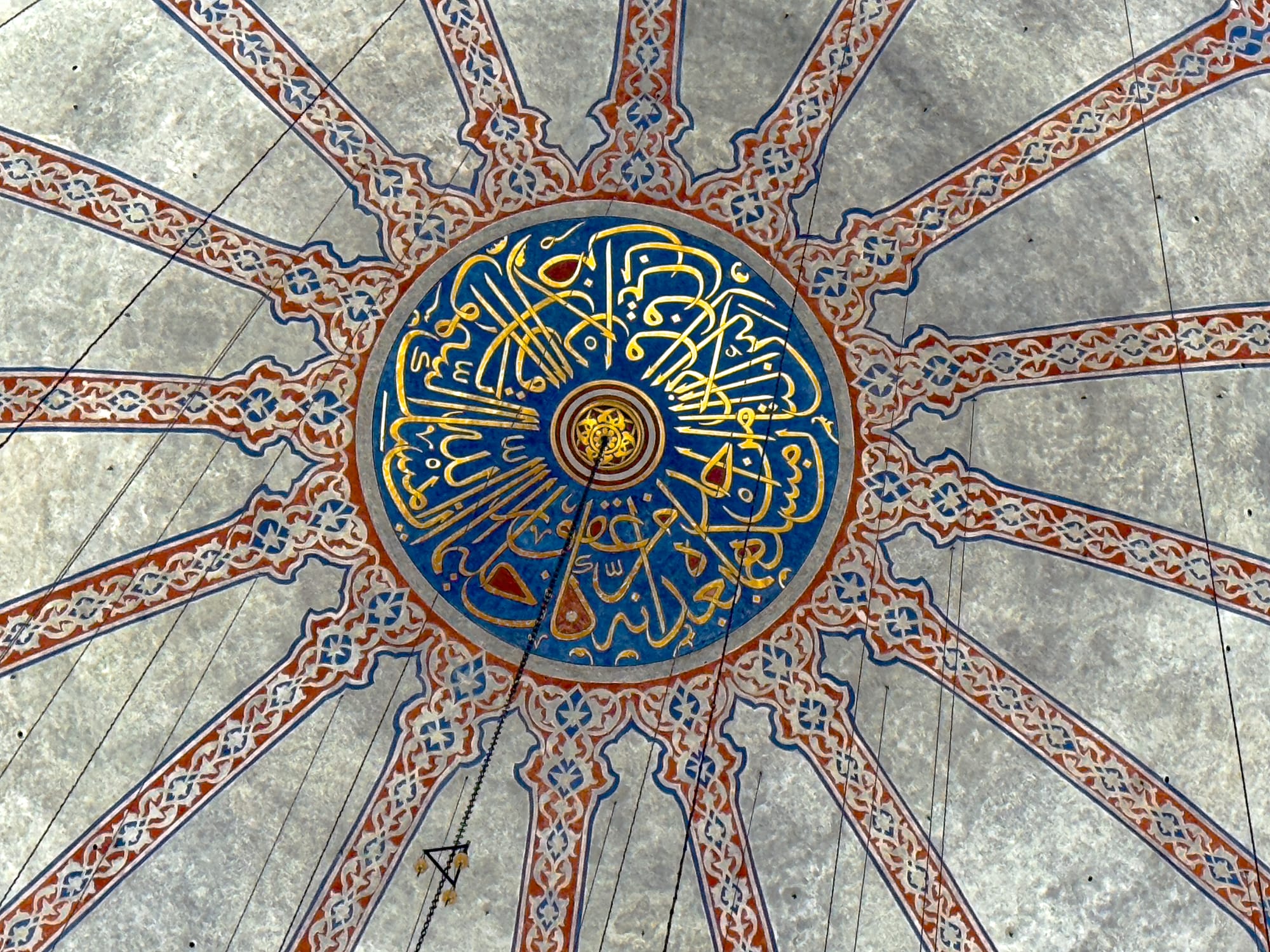
Its architect, Sedefkar Mehmed Agha, was a student of the legendary Mimar Sinan and fused classical Ottoman features with some Byzantine inspiration from the neighboring Hagia Sophia.
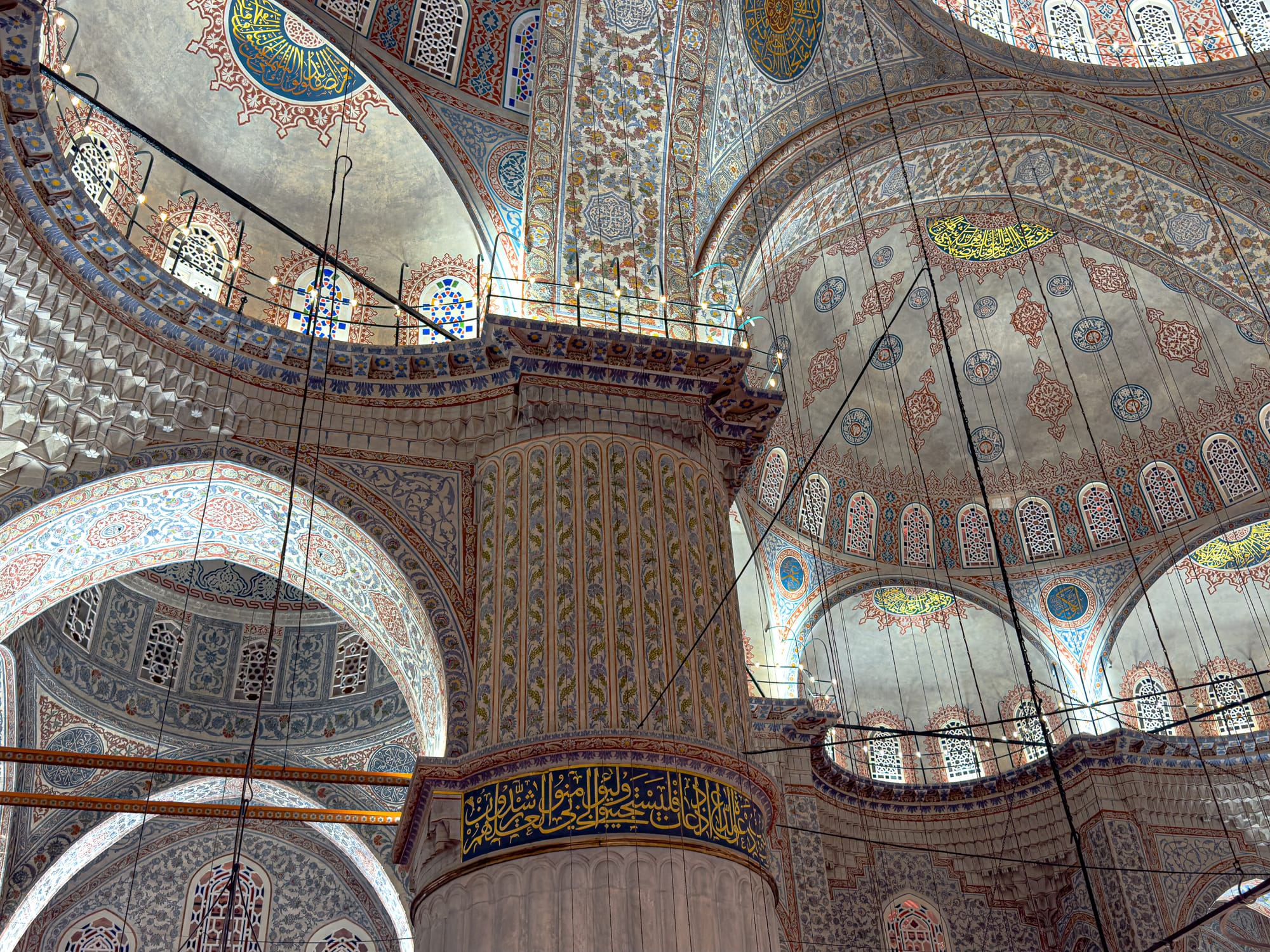
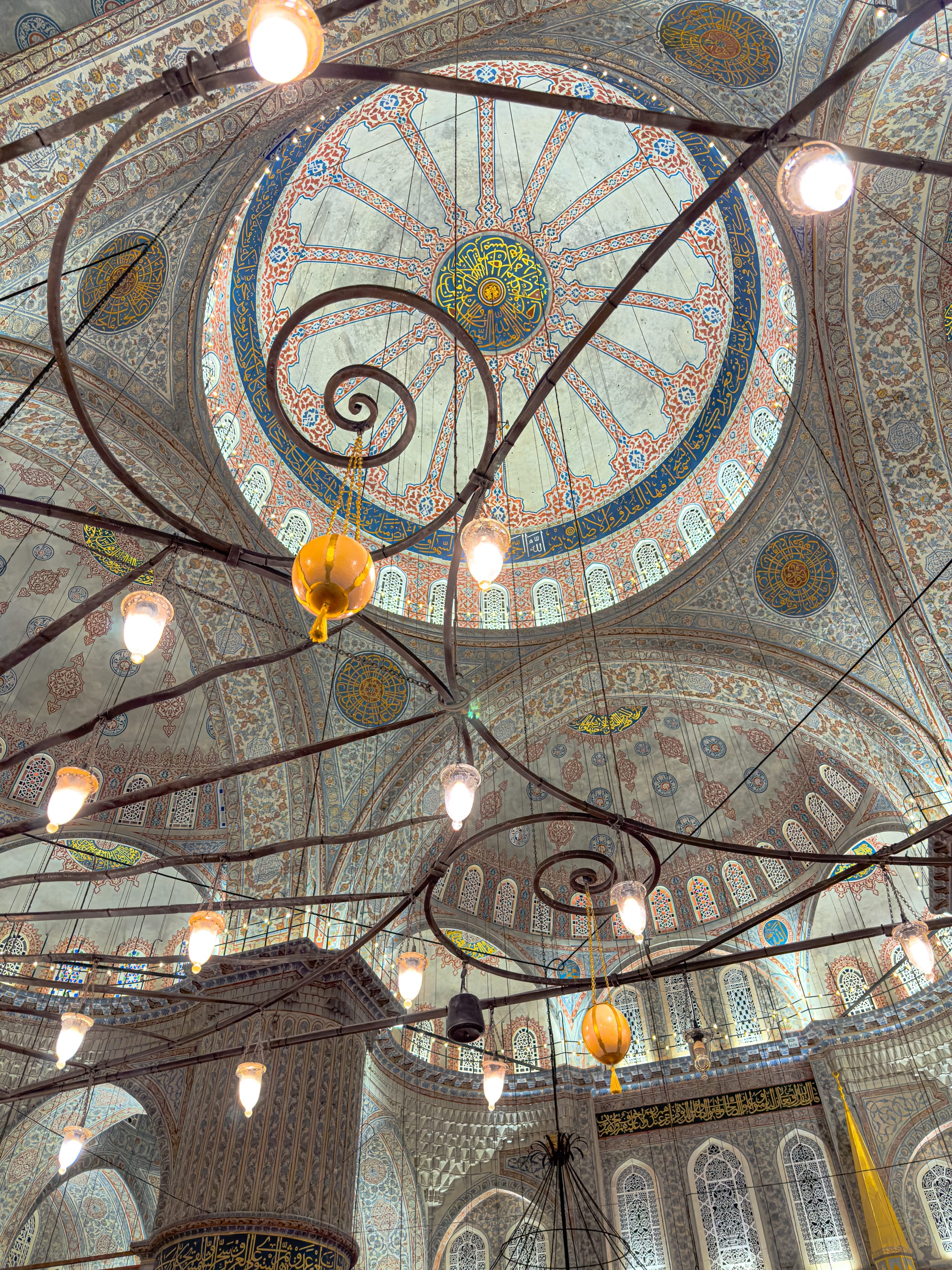
Every corner of the Blue Mosque’s interior bursts with layered color, floral motifs, and reverent geometry
The result is a synthesis of scale, grace, and detail unmatched by any other mosque in the city.
Why blue?
Though the exterior is gray stone, the name "Blue Mosque" comes from the 20,000+ handmade Iznik tiles that line the interior. These ceramic tiles are predominantly blue and feature intricate floral and geometric patterns—tulips, vines, pomegranates, and more—that shimmer as daylight filters through the upper windows.
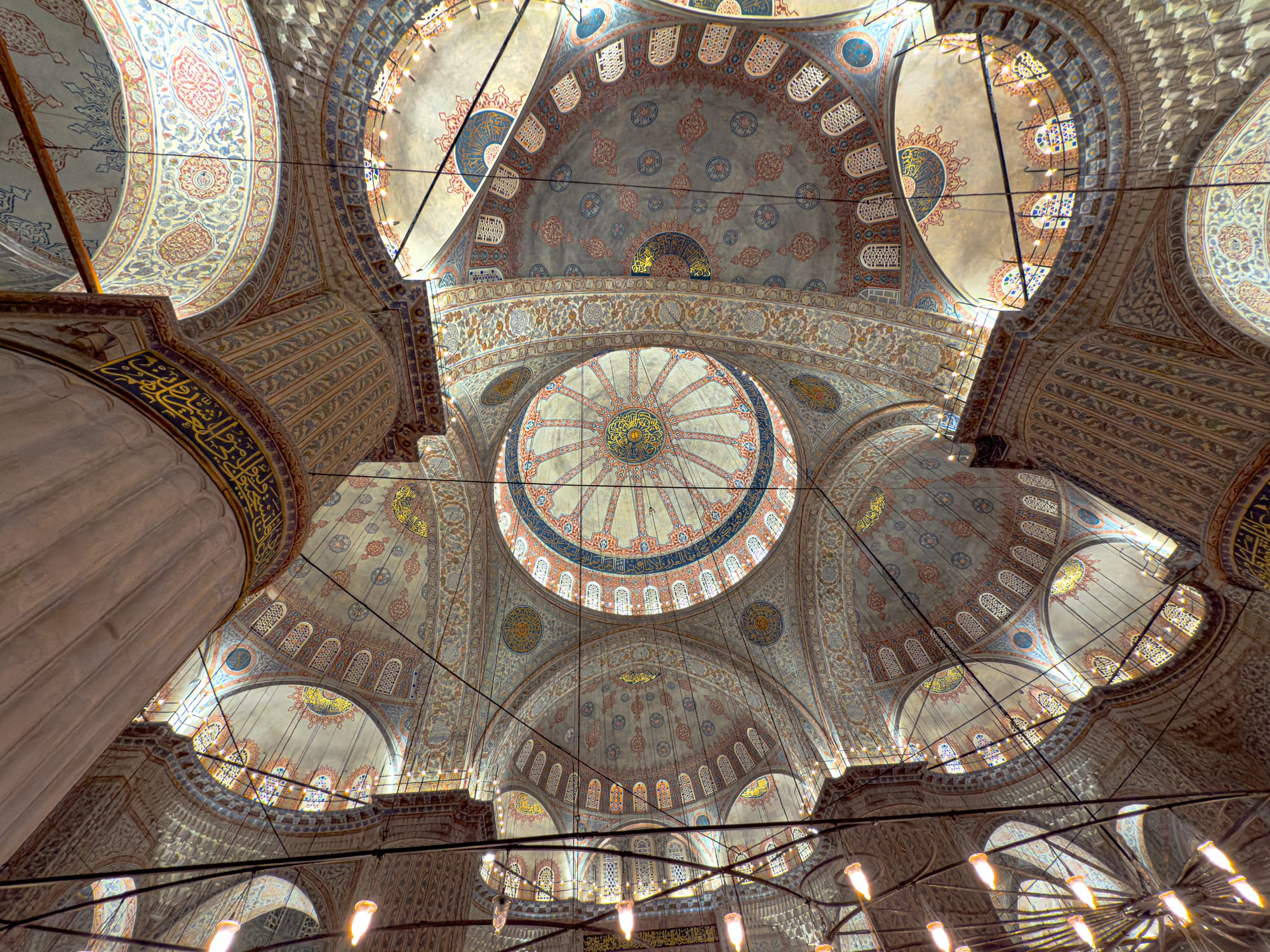
No two tiles are the same. The motifs repeat with variation, lending a kind of musical rhythm to the walls. Some visitors find themselves walking the perimeter slowly, tracing the differences by sight, tile by tile.
Inside the Main Prayer Hall
Step into the prayer hall and you are immediately struck by the sheer size of the central dome: 23.5 meters in diameter and 43 meters high. It's supported by four colossal "elephant foot" pillars and framed by a series of semi-domes that create a sense of cascading symmetry.
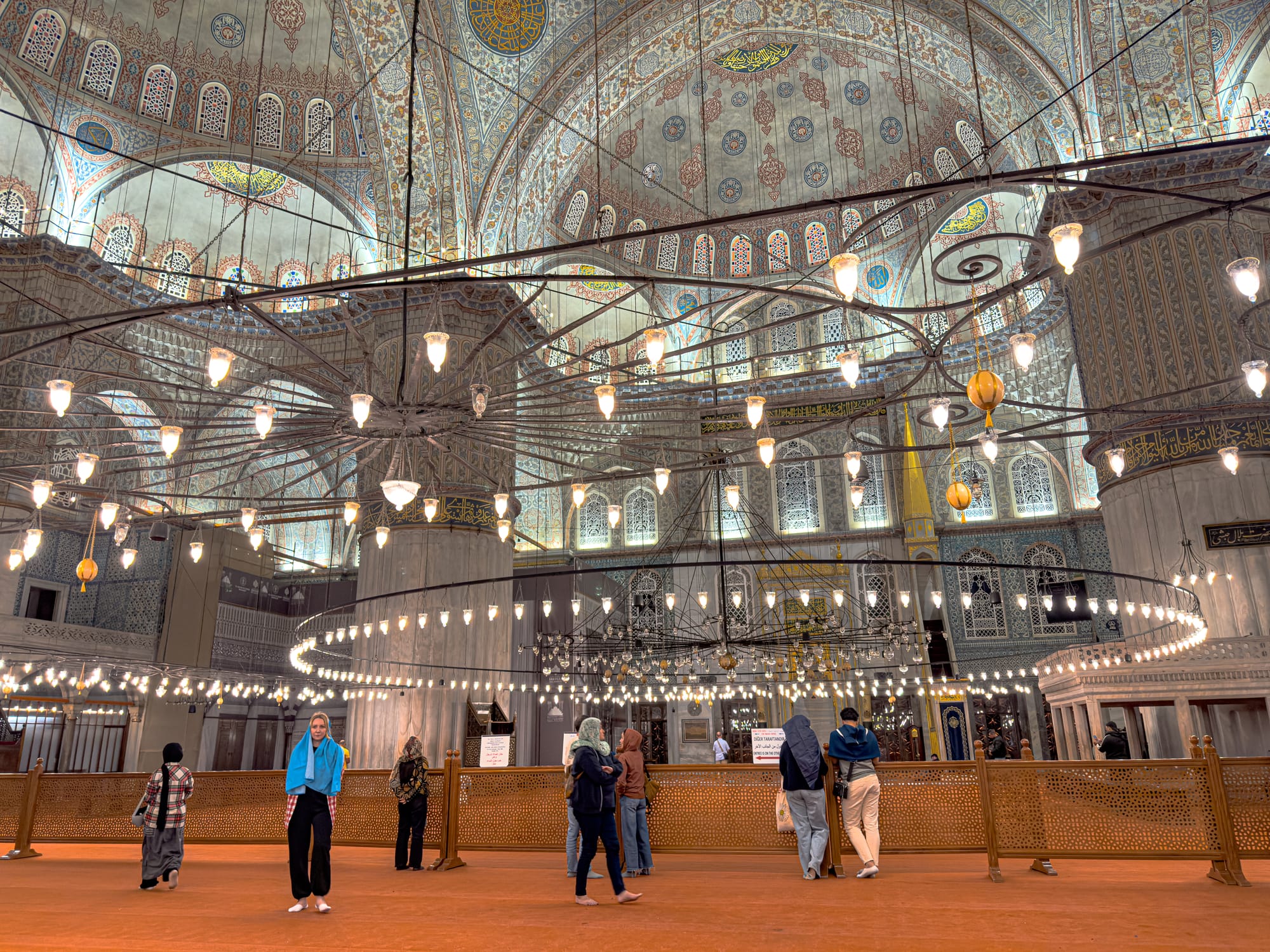
Suspended chandeliers hang just above head height, still lit by bulbs arranged like the oil lamps that once flickered here. Their warm glow enhances the intimacy of the space despite its grand scale.
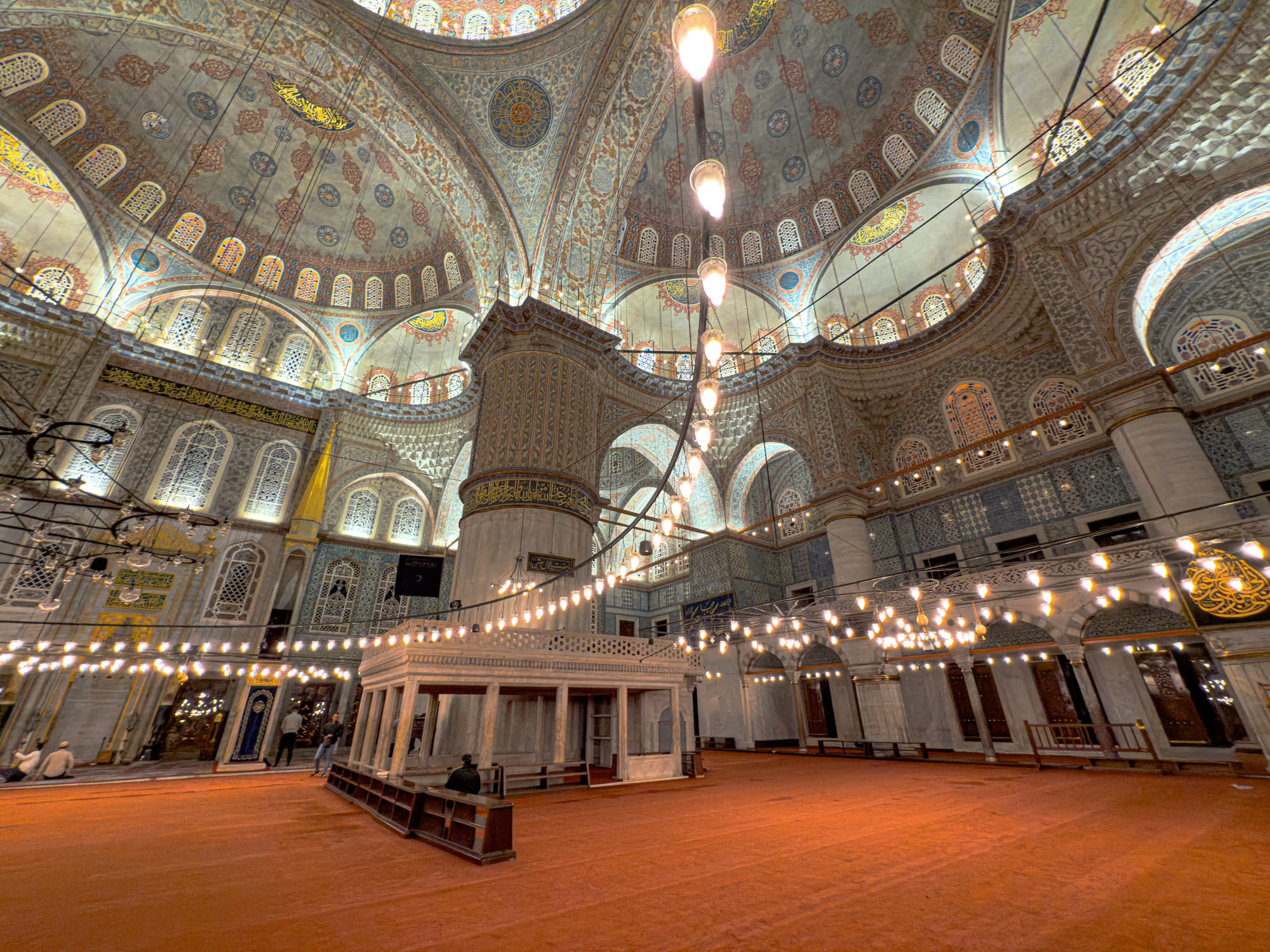
While the mosque remains an active place of worship, non-Muslim visitors are welcome outside of prayer times, and there is an accessible atmosphere of respect and quiet reflection inside.
The courtyard and outer design
Outside, the mosque is encircled by a large courtyard with a central fountain, echoing the symmetry of the interior. The courtyard's porticos are lined with domes and arches, and from the outer edges, you can admire the alignment of the six minarets—a controversial number at the time, equal to that of the mosque in Mecca. According to legend, Sultan Ahmed resolved the dispute by funding a seventh minaret for the Mecca mosque.
A living monument
While much of the Blue Mosque has undergone restoration in recent years, it remains very much alive. You’ll see school groups touring with guides, local worshippers stopping by for daily prayers, and tourists kneeling in silence just to take it all in.
Practical tips for visiting
The Blue Mosque is open every day, but hours are restricted around prayer times. Try visiting in the early morning or late afternoon to avoid both peak tourist hours and midday prayers. Admission is free, but donations are welcome.
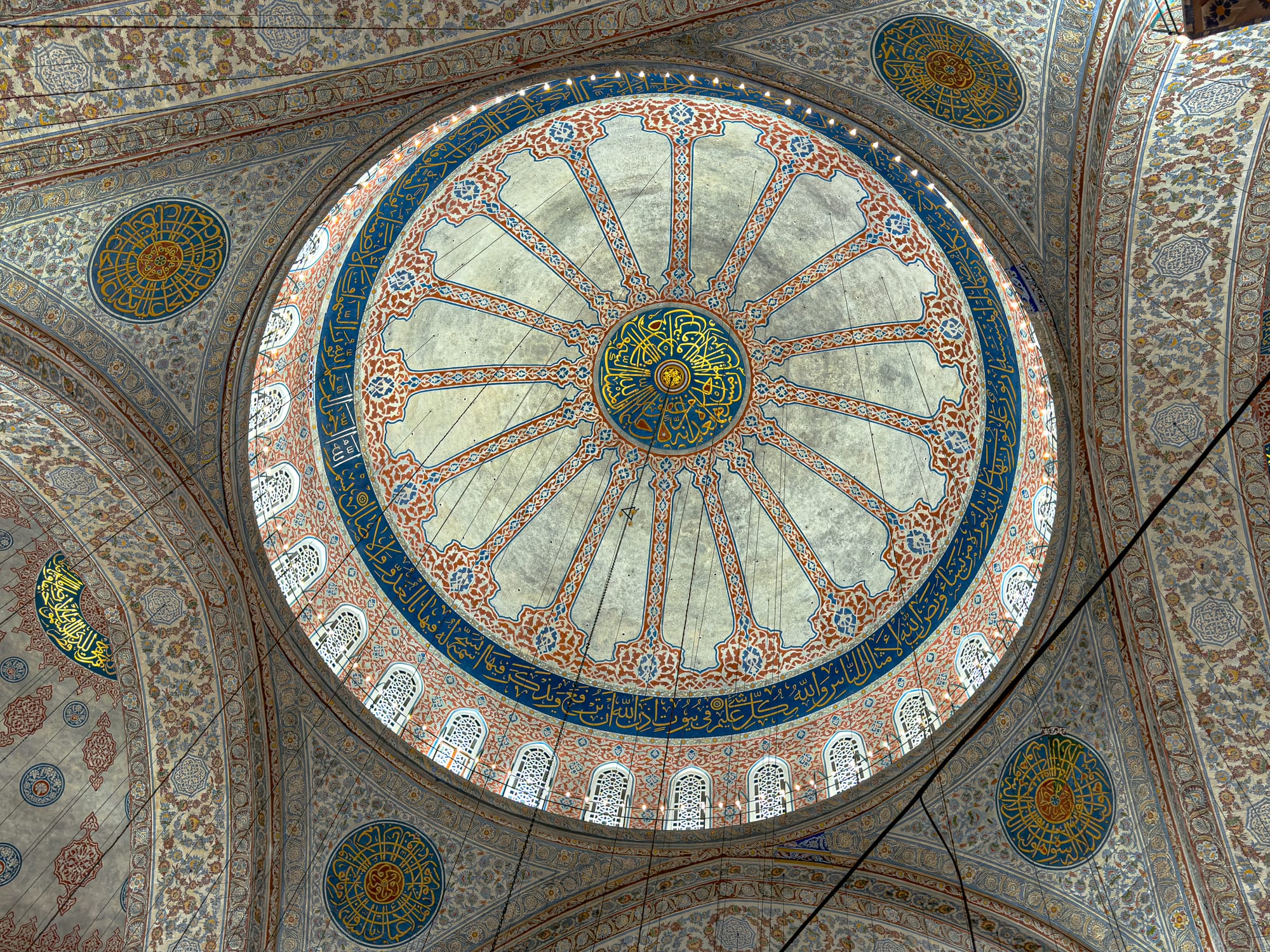
Security screening is in place at the entrance, so leave extra time for queues.
Photography is allowed, but be mindful not to disturb people in prayer.
For those wanting deeper context or to ensure a smooth entry without queues, we recommend this guided tour with knowledgeable local guides.






